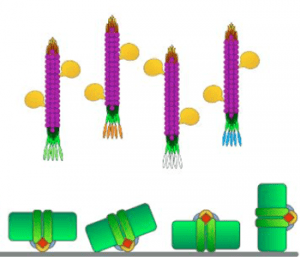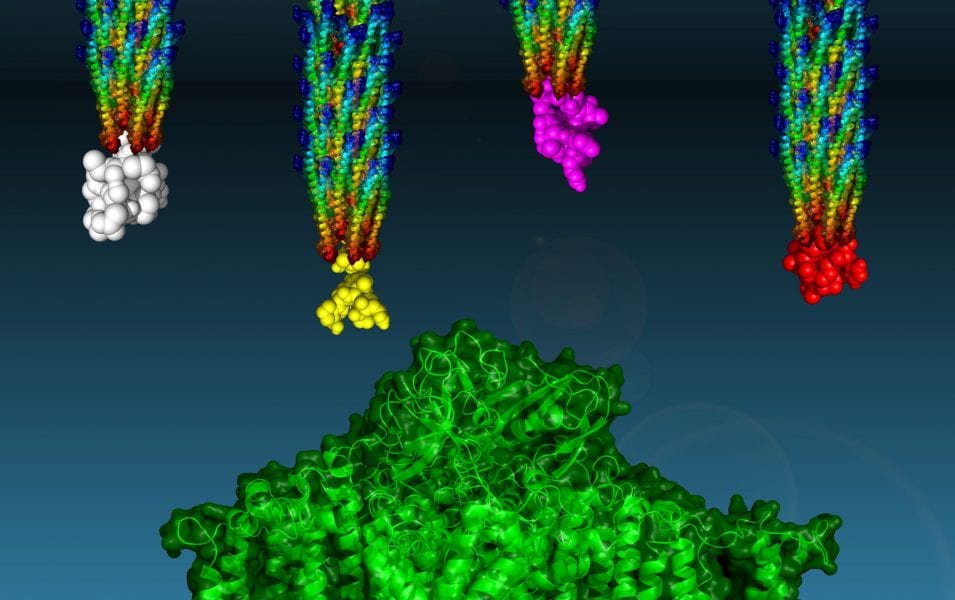Photosynthesis is a highly effective way of light harvesting. An essential step in this complex process is a light-induced charge separation. This step could also be utilized to produce electrical energy — providing it is manageable to connect this biological process to electronic devices — resulting in a bio-solar cell.

Incubation of PSI (green) with Fe4S4-clusters (red) immobilized randomly on a surface with a library of M13 phages (magenta) functionalized with horse radish peroxidase ( yellow) and carrying 12 random amino acids. More information here.
In nature, light harvesting and charge separation are realized by a protein complex called Photosystem I (PSI). For large-scale application, PSI can be “grown” in a biotechnological fashion using cyanobacteria.
The major challenge to realize fabrication of biophotovoltaic cells is binding a monolayer of multiple PSI units to a semi-conducting surface. Moreover, these units need to be uniformly oriented because of the directional charge separation in PSI.
In their article in Advanced Science, Ryan C. Chiechi, Andreas Herrmann, and co-workers from universities in Groningen and Tel Aviv report the successful fabrication of such a biophotovoltaic cell.
A phage display is applied to identify suitable short binding peptides to serve as linkers between PSI and an indium-tin oxide electrode. Thus, it is possible to immobilize a monolayer of PSI units in a highly oriented manner on this semiconductor surface to assemble biophotovoltaic cells.
Accordingly, it is demonstrated that close to 100% uniform PSI orientation on a surface can be realized with the help of short binding peptides, without any chemical or genetic modifications and that these PSI monolayers even survive incorporation into working photovoltaic devices.

















